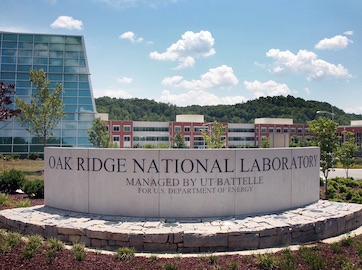Filter Results
Researcher
- Hsuan-Hao Lu
- Joseph Lukens
- Nicholas Peters
- Joseph Chapman
- Muneer Alshowkan
- Anees Alnajjar
- Chad Steed
- Chris Tyler
- Jaydeep Karandikar
- Junghoon Chae
- Kyle Kelley
- Mingyan Li
- Travis Humble
- Aaron Myers
- Akash Jag Prasad
- Alex Miloshevsky
- Bogdan Dryzhakov
- Brian Williams
- Burak Ozpineci
- Calen Kimmell
- Corey Cooke
- Craig A Bridges
- Gui-Jia Su
- Isaac Sikkema
- Jian Chen
- Joseph Olatt
- Justin Cazares
- Kunal Mondal
- Liam Collins
- Mahim Mathur
- Mariam Kiran
- Marti Checa Nualart
- Matt Larson
- Nageswara Rao
- Neus Domingo Marimon
- Oscar Martinez
- Pablo Moriano Salazar
- Pedro Ribeiro
- Rama K Vasudevan
- Sam Hollifield
- Samudra Dasgupta
- Sheng Dai
- Stephen Jesse
- Steven Randolph
- Subho Mukherjee
- Vandana Rallabandi
- Vasiliy Morozov
- Vladimir Orlyanchik
- Zhili Feng

Here we present a solution for practically demonstrating path-aware routing and visualizing a self-driving network.

Technologies directed to polarization agnostic continuous variable quantum key distribution are described.
Contact:
To learn more about this technology, email partnerships@ornl.gov or call 865-574-1051.

Induction cooktops are becoming popular; however, a limitation is that compatible cookware is required. This is a significant barrier to its adoption.

The development of quantum networking requires architectures capable of dynamically reconfigurable entanglement distribution to meet diverse user needs and ensure tolerance against transmission disruptions.

System and method for part porosity monitoring of additively manufactured components using machining
In additive manufacturing, choice of process parameters for a given material and geometry can result in porosities in the build volume, which can result in scrap.

Polarization drift in quantum networks is a major issue. Fiber transforms a transmitted signal’s polarization differently depending on its environment.

This invention addresses a key challenge in quantum communication networks by developing a controlled-NOT (CNOT) gate that operates between two degrees of freedom (DoFs) within a single photon: polarization and frequency.

The invention introduces a novel, customizable method to create, manipulate, and erase polar topological structures in ferroelectric materials using atomic force microscopy.

For additive manufacturing of large-scale parts, significant distortion can result from residual stresses during deposition and cooling. This can result in part scraps if the final part geometry is not contained in the additively manufactured preform.

High coercive fields prevalent in wurtzite ferroelectrics present a significant challenge, as they hinder efficient polarization switching, which is essential for microelectronic applications.

